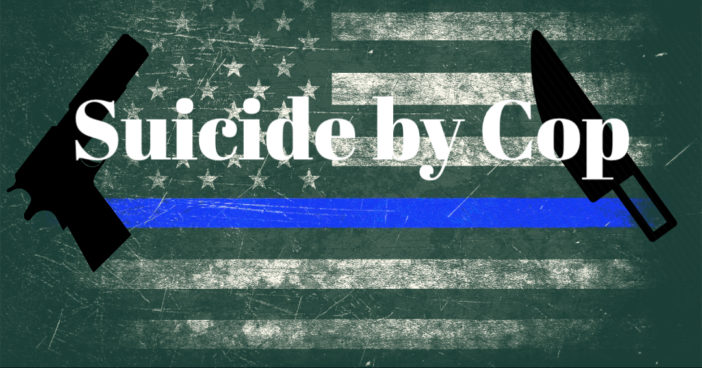One of the big public health crises of recent years has been the increase in rates of suicide over the last few decades in the United States. According to the National Center of Health Statistics there has been a 33 percent increase in the rate of suicide from 1997 to 2017.
The increase in suicide has created unique challenges for law enforcement and their response to these incidents, in particular the police response to incidents where victims precipitate a response in order to get the police to kill them — referred to as “suicide by cop.”
California Peace Officers Standards and Training (POST) defines “suicide by cop” (SBC) as when a person ‘‘engages in behavior which poses an apparent risk of serious injury or death, with the intent to precipitate the use of deadly force by law enforcement personnel towards that individual.”
According to a report by the Police Executive Research Forum (PERF), “each year from 2015 to 2018 there were approximately 900 to 1,000 fatal officer-involved shootings in the United States. By various estimates, approximately 10 to 29 percent or more of officer-involved shootings involve Suicide by Cop incidents.”
According to PERF, an SBC event has certain defining characteristics: A subject threatens the life of the officer or another person, or attempts to make the officer believe he poses such a threat, in order to give the officer no choice but to use lethal force to stop the threat.
In other words, the person cannot bring themselves to take their own life, so they create a scenario in which police are compelled to use deadly force. Across the country officers are being trained in de-escalation in order to disrupt the attempts of those seeking a fatal encounter with police.
Despite additional training these encounters can oftentimes be spontaneous and dynamic events that do not always allow for a graduated response.
One such case was in June 2019. A Fullerton police officer was on his way to the vet with his K9 when a vehicle appeared to intentionally speed by him. When the officer attempted to stop the vehicle, it made contact with his unit and ended up facing toward him the wrong way on the freeway. Getting out of his police unit the officer attempted to engage the female driver. In body camera footage that was later released you can see the female driver in a shooting stance with a firearm pointed at the officer. The officer responded with lethal force and, despite heroic attempts at rendering aid, the driver later passed away.
The driver was later identified as a 17-year-old girl who had stolen her parents’ vehicle and was undergoing a mental health crisis. The weapon was a replica firearm.
In another SBC event, in July 2019, Athens-Clarke County Sheriff’s deputies responded to a call of a disturbed man with a knife at an apartment complex. Upon encountering the man, the officers could see he had injured himself and was behaving aggressively. In the released body camera footage, the officers repeatedly order the man to drop the knife as he walks toward them. The deputies plead with him to “please put the knife down” and say “we can help you.”
He refused to comply and yelled to them, “Do it!” over and over again. The deputies retreated to a distance, trying over and over again to get the man to comply. At one point he charged one of the officers with the knife in hand and was shot. Despite being shot several times the man managed to take the officer to the ground and attempted to take his firearm. A second officer fired, fatally wounding the man.
Police response to suicide calls is challenging and often exposes the officers and the departments to significant risk. In some areas departments are re-assessing, if absent any immediate threat, if they should even respond to suicide calls.
Such was the case in Plumas County in California. A man’s family called after receiving a text message from a relative threatening to harm himself. Calling the sheriff’s office, they were told that without more information deputies would not be responding. In an interview with the Los Angeles Times Sheriff-Coroner Greg Hagwood said, “In too many instances, we show up and further aggravate a crisis situation… and then, in the end, bad things happen.”
In an article from Force Science News, a publication dealing with police use of force, Mike Ranalli, a former police chief from New York, stated, “When you’re confronting a suicidal subject who isn’t committing a serious crime and isn’t an active threat to anyone other than themselves, the best response may be not to engage and to withdraw” from the situation… “This may seem like a sin of omission, but it is often the most legally appropriate” as well as the safest response.
For the time being police officers and first responders will still be at the front lines of dealing with today’s mental health crisis. They are the only ones who answer the phone 24 hours a day and there is a strong expectation from the public that when they call someone will come.
In the vast majority of these cases police officers are responding professionally and effectively. It’s the hope of every officer to safely resolve these often-intense situations whenever they respond. But as we can all see, sometimes they are not given a choice.
 Behind the Badge
Behind the Badge



